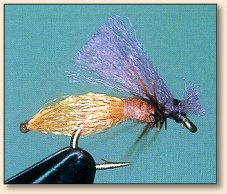1. Start thread on the shank at the spot even with the
hook point and wrap a thread base to the back of the hook
just beyond the spot even with the barb. Dub a thin body
from this point to where you started the thread.
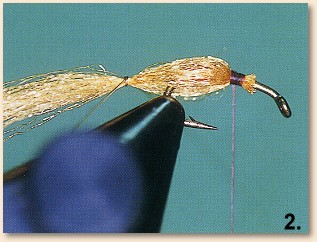
2. Secure a bundle of Darlon in front of the body with two
soft wraps of thread, no thread torque at all. Take a
thumbnail and press on the fibers from the top of the hook.
This forces the fibers down the sides of the shank allowing
the fibers to encompass the hook shank. Tighten the thread
and make a couple of wraps back towards the body. Using a
fine, clear thread or 8X tippet material; make a simple
overhand knot around the Darlon. The knot should be about
a 1/2 hook shank length beyond the bend of the hook. You
are making an extended trailing shuck with the Darlon,
which looks very much like a teardrop, hence the name
of the fly. The shuck should be 3/4 of the body length.
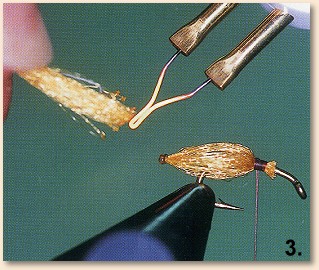
3. Fred uses a medical instrument used to cauterize blood
vessels to melt the Darlon at the knot. You push a button
on this thing and it is red hot instantly. A hot bodkin or
needle will work, but you need to keep a candle burning to
heat it up for each fly. This is also the reason for using
monofilament for the knotting material. It melts right
along with the Darlon to help hold the individual strands
together. Nifty little trick!
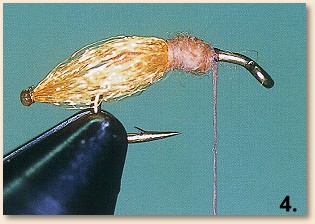
4. Add a small amount of dubbing in front of the Darlon teardrop.
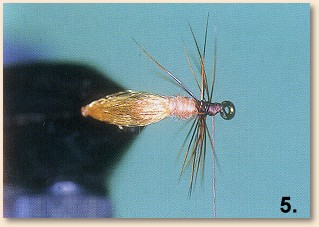
5. Secure a brown hackle in front of the body and make
two or three turns with the hackle for the legs on the
fly. These turns of hackle do nothing for the floatability
of the fly. Secure the hackle and trim excess. Trim hackle
on the top and bottom of the hook, leaving the barbules
on the side for the legs.
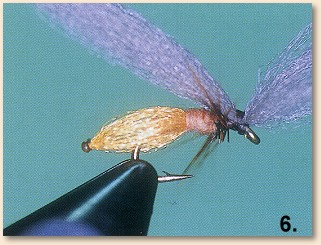
6. Take a bundle of polypropylene yarn and secure it with
several tight wraps of thread on top of the hook in front
of the legs. Whip finish and trim wing to length. Trim
fibers hanging over the eye of the hook even with the very
front of the hook. Pushing on the top with your thumbnail
spreads the poly yarn. The wing will float the fly much
better if the poly yarn is spread evenly on top of the body
and on both sides of the hook at the tie-in point. Dress only
the wing with floatant so that the body and the
shuck are below the water surface.
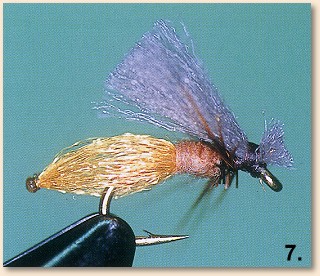
~ Marty Bartholomew

